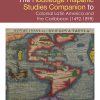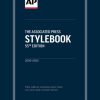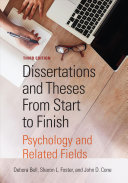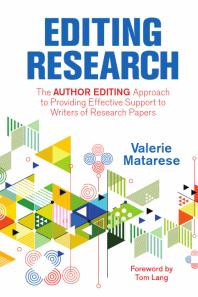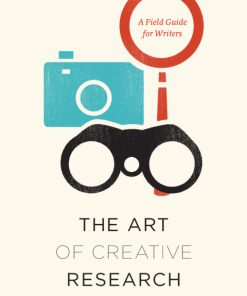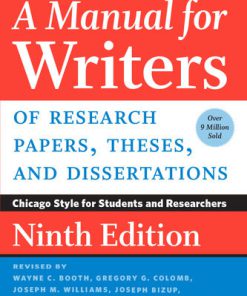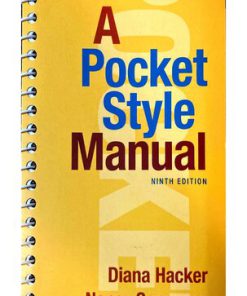A Manual for Writers of Research Papers Theses and Dissertations 9th Edition by Kate Turabian ISBN 9780226713892 022671389X
$50.00 Original price was: $50.00.$25.00Current price is: $25.00.
A Manual for Writers of Research Papers Theses and Dissertations 9th Edition by Kate Turabian – Ebook PDF Instant Download/Delivery: 9780226713892 ,022671389X
Full download A Manual for Writers of Research Papers Theses and Dissertations 9th Edition after payment
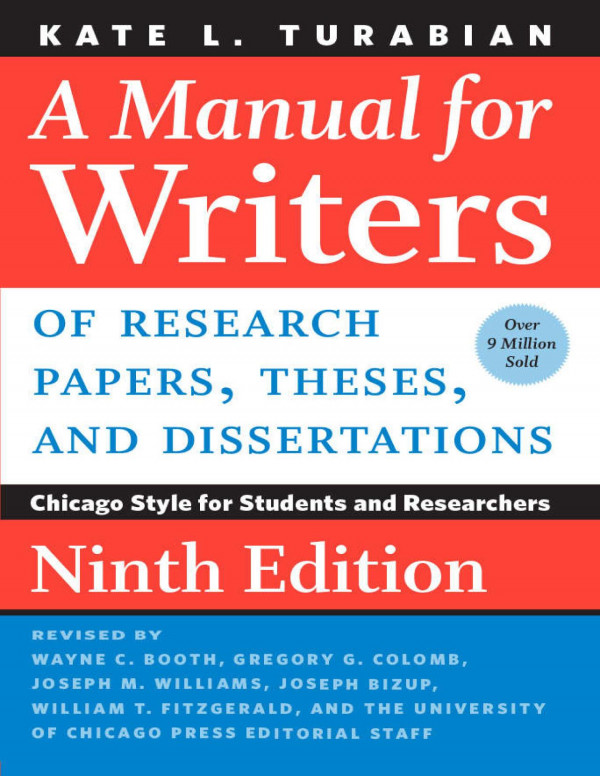
Product details:
ISBN 10: 022671389X
ISBN 13: 9780226713892
Author: Kate Turabian
A Manual for Writers of Research Papers Theses and Dissertations 9th Edition Table of contents:
Part I Research and Writing
Overview of Part I
1 What Research Is and How Researchers Think about It
1.1 What Research Is
1.2 How Researchers Think about Their Aims
1.3 Conversing with Your Readers
2 Defining a Project: Topic, Question, Problem, Working Hypothesis
2.1 Find a Question in Your Topic
2.2 Understanding Research Problems
2.3 Propose a Working Hypothesis
2.4 Build a Storyboard to Plan and Guide Your Work
2.5 Join or Organize a Writing Group
3 Finding Useful Sources
3.1 Three Kinds of Sources and Their Uses
3.2 Search for Sources Systematically
3.3 Evaluate Sources for Relevance and Reliability
3.4 Look beyond the Usual Kinds of References
3.5 Record Your Sources Fully, Accurately, and Appropriately
4 Engaging Your Sources
4.1 Read Generously to Understand, Then Critically to Engage
4.2 Take Notes Systematically
4.3 Take Useful Notes
4.4 Review Your Progress
4.5 Manage Moments of Normal Anxiety
5 Constructing Your Argument
5.1 What a Research Argument Is and Is Not
5.2 Build Your Argument around Answers to Readers’ Questions
5.3 Turn Your Working Hypothesis into a Claim
5.4 Assemble the Elements of Your Argument
5.5 Prefer Arguments Based on Evidence to Arguments Based on Warrants
5.6 Assemble an Argument
6 Planning a First Draft
6.1 Avoid Unhelpful Plans
6.2 Create a Plan That Meets Your Readers’ Needs
6.3 File Away Leftovers
7 Drafting Your Paper
7.1 Draft in the Way That Feels Most Comfortable
7.2 Develop Effective Writing Habits
7.3 Keep Yourself on Track through Headings and Key Terms
7.4 Quote, Paraphrase, and Summarize Appropriately
7.5 Integrate Quotations into Your Text
7.6 Use Footnotes and Endnotes Judiciously
7.7 Show How Complex or Detailed Evidence Is Relevant
7.8 Be Open to Surprises
7.9 Guard against Inadvertent Plagiarism
7.10 Guard against Inappropriate Assistance
7.11 Work Through Chronic Procrastination and Writer’s Block
8 Presenting Evidence in Tables and Figures
8.1 Choose Verbal or Visual Representations of Your Data
8.2 Choose the Most Effective Graphic
8.3 Design Tables and Figures
8.4 Communicate Data Ethically
9 Revising Your Draft
9.1 Check for Blind Spots in Your Argument
9.2 Check Your Introduction, Conclusion, and Claim
9.3 Make Sure the Body of Your Report Is Coherent
9.4 Check Your Paragraphs
9.5 Let Your Draft Cool, Then Paraphrase It
10 Writing Your Final Introduction and Conclusion
10.1 Draft Your Final Introduction
10.2 Draft Your Final Conclusion
10.3 Write Your Title Last
11 Revising Sentences
11.1 Focus on the First Seven or Eight Words of a Sentence
11.2 Diagnose What You Read
11.3 Choose the Right Word
11.4 Polish It Up
11.5 Give It Up and Turn It In
12 Learning from Comments on Your Paper
12.1 Two Kinds of Feedback: Advice and Data
12.2 Find General Principles in Specific Comments
12.3 Talk with Your Reader
13 Presenting Research in Alternative Forums
13.1 Plan Your Oral Presentation
13.2 Design Your Presentation to Be Listened To
13.3 Plan Your Poster Presentation
13.4 Plan Your Conference Proposal
14 On the Spirit of Research
Part II Source Citation
15 General Introduction to Citation Practices
15.1 Reasons for Citing Your Sources
15.2 The Requirements of Citation
15.3 Two Citation Styles
15.4 Electronic Sources
15.5 Preparation of Citations
15.6 Citation Management Tools
16 Notes-Bibliography Style: The Basic Form
16.1 Basic Patterns
16.2 Bibliographies
16.3 Notes
16.4 Short Forms for Notes
17 Notes-Bibliography Style: Citing Specific Types of Sources
17.1 Books
17.2 Journal Articles
17.3 Magazine Articles
17.4 Newspaper Articles
17.5 Websites, Blogs, and Social Media
17.6 Interviews and Personal Communications
17.7 Papers, Lectures, and Manuscript Collections
17.8 Older Works and Sacred Works
17.9 Reference Works and Secondary Citations
17.10 Sources in the Visual and Performing Arts
17.11 Public Documents
18 Author-Date Style: The Basic Form
18.1 Basic Patterns
18.2 Reference Lists
18.3 Parenthetical Citations
19 Author-Date Style: Citing Specific Types of Sources
19.1 Books
19.2 Journal Articles
19.3 Magazine Articles
19.4 Newspaper Articles
19.5 Websites, Blogs, and Social Media
19.6 Interviews and Personal Communications
19.7 Papers, Lectures, and Manuscript Collections
19.8 Older Works and Sacred Works
19.9 Reference Works and Secondary Citations
19.10 Sources in the Visual and Performing Arts
19.11 Public Documents
Part III Style
20 Spelling
20.1 Plurals
20.2 Possessives
20.3 Compounds and Words Formed with Prefixes
20.4 Line Breaks
21 Punctuation
21.1 Periods
21.2 Commas
21.3 Semicolons
21.4 Colons
21.5 Question Marks
21.6 Exclamation Points
21.7 Hyphens and Dashes
21.8 Parentheses and Brackets
21.9 Slashes
21.10 Quotation Marks
21.11 Apostrophes
21.12 Multiple Punctuation Marks
22 Names, Special Terms, and Titles of Works
22.1 Names
22.2 Special Terms
22.3 Titles of Works
23 Numbers
23.1 Words or Numerals?
23.2 Plurals and Punctuation
23.3 Date Systems
23.4 Numbers Used outside the Text
24 Abbreviations
24.1 General Principles
24.2 Names and Titles
24.3 Geographical Terms
24.4 Time and Dates
24.5 Units of Measure
24.6 The Bible and Other Sacred Works
24.7 Abbreviations in Citations and Other Scholarly Contexts
25 Quotations
25.1 Quoting Accurately and Avoiding Plagiarism
25.2 Incorporating Quotations into Your Text
25.3 Modifying Quotations
26 Tables and Figures
26.1 General Issues
26.2 Tables
26.3 Figures
Appendix: Paper Format and Submission
A.1 General Format Requirements
A.2 Format Requirements for Specific Elements
A.3 File Preparation and Submission Requirements
Bibliography
Authors
Index
People also search for A Manual for Writers of Research Papers Theses and Dissertations 9th Edition:
literary works of manuel arguilla
writing tools for novelists
basic steps to writing research papers
cost of writing a research paper
who writes thesis papers
Tags: Kate Turabian, Writers, Research Papers, Dissertations
You may also like…
History & Research
Housekeeping & Leisure - Handicraft: Cutting and Sewing
Uncategorized
Languages - English as a Foreign Language & Reference
English for Writing Research Papers 3rd Edition Adrian Wallwork
Reference - Writing
A Manual for Writers of Research Papers Theses and Dissertations Ninth Edition Kate L. Turabian
Science (General) - Research & Development
College Research Papers For Dummies 1st Edition Joe Giampalmi
dictionaries & phrasebooks
Languages - English as a Foreign Language & Reference
English for Writing Research Papers 3rd Edition by Adrian Wallwork ISBN 9783031310720 3031310721

